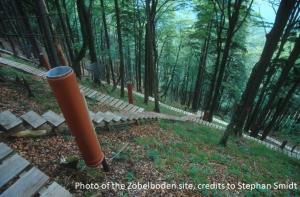Research on and monitoring of the effects of air pollution on different environmental media and health has been carried out for more than four decades under the UNECE Convention on Long-range Transboundary Air Pollution. The data and research that has emerged from these efforts is unique as it gives insights into long-term trends. It has also created a common understanding of the harmful effects of air pollution, which has been a prerequisite for informing policy decisions and reaching agreement on effective pollution control under the Convention.
Gathering at a meeting (Lunz, Austria, 9-11 May) to discuss latest research findings, experts from the Convention’s International Cooperative Programme for assessment and monitoring of the effects of air pollution on rivers and lakes (ICP Waters) and the International Cooperative Programme on Integrated Monitoring of Air Pollution Effects on Ecosystems (ICP Monitoring) also reflected on the value of long-term monitoring. These data sets have been able to give insights on long-term trends on air pollution effects on water quality and forest health, among others. They have also proven able to address emerging environmental concerns and interactions between air pollution, climate change and biodiversity.
A concrete example and case in point that was looked at more closely at the meeting is the Zöbelboden (Austria) monitoring site, which has been part of the ICP Integrated Monitoring network for 30 years. While the monitoring work at the Zöbelboden site was originally focused on sulphur deposition (the so-called “acid rain”), it has since played an important role in research on other environmental challenges, such as biodiversity and climate change. For example, monitoring of key air pollutants shows that nitrogen deposition at Zöbelboden exceeds the target thresholds (critical load) for ecosystems and has caused a massive loss of sensitive lichen species, a change in the plant community, and nitrate discharges to spring water.
The measurements at the monitoring site have also resulted in a detailed understanding of how water quality has been impacted by the interaction of airborne deposition of pollutants and ecosystem processes, in an area that is important for the provision of drinking water to many people. Monitoring key variables for several decades has also allowed researchers to investigate the impacts of climate change. Despite a significant observed increase in temperature, the mixed natural forest at Zöbelboden, which is made up of beech, spruce, larch, and other species, has shown a high degree of resilience as a result of the different water use strategies of the various tree species.
